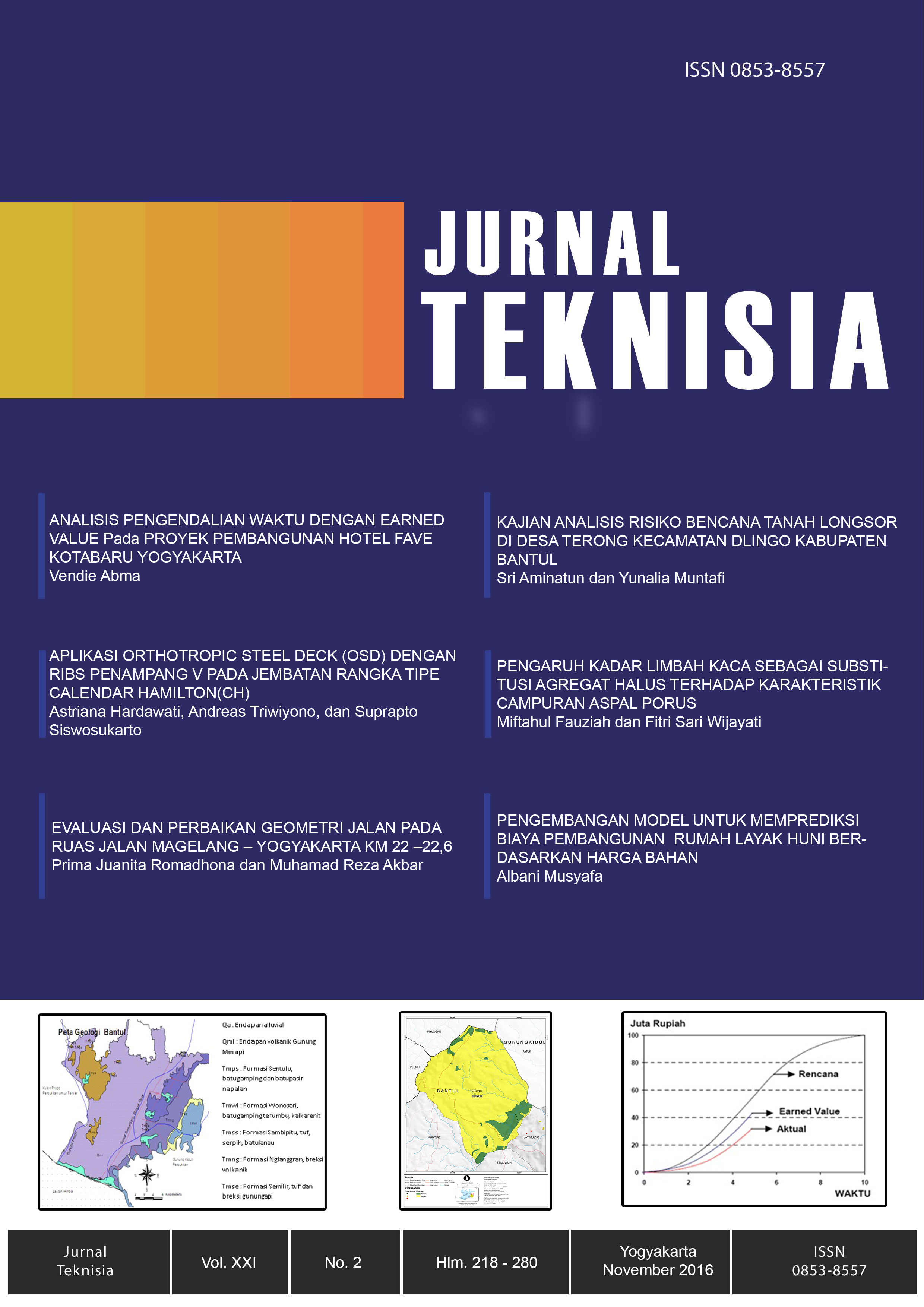Main Article Content
Abstract
Bantul Regency has 16 landslides-prone villages located on the ridge morphology of the hills in the eastern region and a small part of the western region of Bantul regency. Based on the landslide map from BPBD in 2011, Terong village is one of the villages in Bantul regency which experienced high intensity of landslide, so the risk analysis of landslide in detail is needed as one of the disaster mitigation efforts in that region. This study aims to identify residents who are in the landslide threat zone, both in a high threat zone and medium threat zone. The method used in this research is descriptive method with qualitative approach used to give a clear picture about the number of citizens in each zonation. Sources of data used are primary and secondary data sources through interviews and documentation. The results of the study indicate that 1) the number of household in the high risk red zone is 1 household, in the yellow risk zone is 22 household, and in the green risk zone is 1 household; 2) Terong village has a high threat, medium vulnerability, and high capacity, which is means that it has a medium risk value.
Keywords
Article Details
Under the following term:
-
Attribution — You must give appropriate credit, provide a link to the license, and indicate if changes were made. You may do so in any reasonable manner, but not in any way that suggests the licensor endorses you or your use.
-
ShareAlike — If you remix, transform, or build upon the material, you must distribute your contributions under the same license as the original.
- No additional restrictions — You may not apply legal terms or technological measures that legally restrict others from doing anything the license permits.
References
- Undang-Undang Republik Indonesia No.24 tahun 2007 tentang Penanggulangan Bencana.
- Badan Nasional Penanggulangan Bencana (BNPB), (2015), Kerangka Kerja Sendai untuk Pengurangan Risiko Bencana (2015-2030).
- United Nation-International Strategi for Disaster Reduction (UN-ISDR), 2007, Panduan untuk Mengimplementasikan Kerangka Kerja Sendai.
- Peraturan Pemerintah No.21 tahun 2008, tentang Penyelenggaraan Penang-gulangan Bencana.
- BNPB, (2008), Peraturan Kepala Badan Nasional Penanggulangan Bencana Republik Indonesia, No.4 tahun 2008 tentang Pedoman Rencana Penanggulangan Bencana.
- BNPB, (2012), Peraturan Kepala Badan Nasional Penanggulangan Bencana Republik Indonesia, No.2 tahun 2012 tentang Pedoman Umum Pengkajian Risiko Bencana.
References
Undang-Undang Republik Indonesia No.24 tahun 2007 tentang Penanggulangan Bencana.
Badan Nasional Penanggulangan Bencana (BNPB), (2015), Kerangka Kerja Sendai untuk Pengurangan Risiko Bencana (2015-2030).
United Nation-International Strategi for Disaster Reduction (UN-ISDR), 2007, Panduan untuk Mengimplementasikan Kerangka Kerja Sendai.
Peraturan Pemerintah No.21 tahun 2008, tentang Penyelenggaraan Penang-gulangan Bencana.
BNPB, (2008), Peraturan Kepala Badan Nasional Penanggulangan Bencana Republik Indonesia, No.4 tahun 2008 tentang Pedoman Rencana Penanggulangan Bencana.
BNPB, (2012), Peraturan Kepala Badan Nasional Penanggulangan Bencana Republik Indonesia, No.2 tahun 2012 tentang Pedoman Umum Pengkajian Risiko Bencana.
